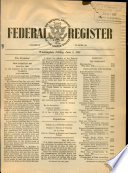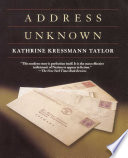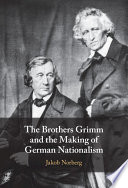Fables, short stories with a moral meaning, are popular with children and adults alike, and these 14 best fable authors will give you a quick overview of this literary genre.
Fables are short, witty stories that often carry a moral lesson or political statement. Made famous in Ancient Greece, fables become the stories told to children to help them learn morality. Many fables come from folklore and fairy tales, and these become part of the oral tradition of many cultures.
For more recommendations, you might also enjoy exploring best adventure books, best David Sedaris books, or authors like Bill Bryson.
Table of Contents
Open Table of Contents
- Famous Fable Authors Throughout History
- 1. Aesop
- 2. Grimm Brothers
- 3. Hans Christian Andersen
- 4. Jean de la Fontaine
- 5. Ambrose Bierce
- 6. George Orwell
- 7. Jean-Pierre Claris de Florian
- 9. Joel Chandler Harris
- 10. Leonardo da Vinci
- 11. John Gay
- 12. Ivan Krylov
- 13. Tomas de Iriarte
- 15. Augusto Monterroso
Famous Fable Authors Throughout History
On the surface, fables seem simplistic. Yet when you dig a little deeper, you will quickly find that they carry a rich meaning that makes them worth learning. This deeper meaning is what makes them so powerful. If you want to add some fables to your own knowledge base, pick up one of the collections from one of these famous fable authors.
1. Aesop
Some of the most popular fables of all time, “The Tortoise and the Hare”
No one is quite as synonymous with the fable as Aesop. This ancient Greek weaver of tales is, perhaps, a fictional character himself, as it was actually a Greek named Phaedrus who wrote the Aesop’s Fables down.
Regardless, this collection is the source of some of the most popular fables of all time, including “The Tortoise and the Hare,” “The Lion and the Mouse” and “The Town Mouse and the Country Mouse.” These stories are considered famous children’s literature and are read around the world. Few children grow up without hearing a version of these tales, and many retellings of them are part of children’s picture book collections.
2. Grimm Brothers
Some of the most famous fairy tales in history come from the works of the Grimm Brothers. Cinderella, Snow White, and Hansel and Gretel all come from the dark tales of these two brothers. The Complete Grimm’s Fairy Tales is a compilation of the stories they collected and wrote, and few of them have the happy endings common with modern-day fairy tales.
The Brothers Grimm, as they are now known, hailed from Germany and wrote during the rise of Romanticism, a period that brought renewed interest to folk tales. While some of the tales in their book are their own work, others are adaptations or recordings of traditional German folklore.
3. Hans Christian Andersen
Hans Christian Andersen was a Danish writer who wrote several fairy tales that continue inspiring children today. “The Little Mermaid,” “The Ugly Duckling,” “The Snow Queen” and the “Princess and the Pea” are some of his best-known stories. Like Aesop, Hans Christian Andersen’s works are part of classic children’s literature collections today.
Andersen wrote his collections in the early 1800s, and his first work Fairy Tales Told for Children, included a number of tales he had heard as a child. They were so popular that Andersen was quickly asked to write more, and many of the world’s most beloved children’s stories finally had a home.
4. Jean de la Fontaine
French writer Jean de la Fontaine wrote fables and poetry) in the 17th Century. He is known as one of the first fabulists in Europe, often credited for introducing the genre. La Fontaine’s collection of fables contains primarily animal characters, so they fit the genre well.
Some of the better-known fables in his collection include “Ant and the Grasshopper,” “The Fox and the Grapes” and “The Goose that Laid the Golden Eggs.” Several of these tales seem similar to the fables of Ancient Greece, as Fontaine got his inspiration from Aesop’s works.
5. Ambrose Bierce
Ambrose Bierce was an American short story writer. Though he wrote on a number of topics, especially his experience as a Civil War veteran, it is his collection of fables, Fantastic Fables, that gave him a spot in literary history.
Unlike other fable writers, Bierce did not use animal characters primarily. His fables are also more mature than those intended for children and tend to have a dark, twisted humor.
6. George Orwell
George Orwell
The author of Animal Farm, George Orwell is known for his satirical fables. This story shows the pitfalls of revolution without the right plan, as the animals on the farm throw off one form of tyranny only to fall prey to another.
Unlike other authors of fables, Orwell did not write to appeal to children or teach moral lessons. Instead, he wrote to create a commentary on the political perils he saw in the world. Still, he deserves a spot on this list because his work is an allegorical fable.
7. Jean-Pierre Claris de Florian
Jean-Pierre Claris de Florian was a French author in the 18th Century who wrote fables for children. Like many other fabulists, he wrote a lot of stories involving animals, such as “The Crocodile and the Sturgeon” and “The Monkeys and the Leopard.”
De Florian’s fables are known for their happy endings and moral lessons. Several famous French expressions come from his works. One of these, “He who laughs last laughs best” is also said in other cultures because it is so poignant. Are you looking for children’s books for your kids to enjoy? Rudyard Kipling
Rudyard Kipling’s book Just So Stories is a perfect example of fables. This children’s literature classic features well-known tales like “How the Elephant Got His Trunk.” His stories are humorous and warm, and today many have become beautiful picture books for children.
Like his other classic work The Jungle Book, Kipling’s fables feature exotic locations like India, which is where he spent much of his life. This setting adds to their appeal because of the far-off nature of the setting. He won the Nobel Prize in Literature in 1907.
9. Joel Chandler Harris
Joel Chandler Harris is the folklorist who wrote the Uncle Remus stories. This collection of African-American folklore includes animal stories, songs and oral tales passed down by the black Americans of the South. Though many of the tales did not originate with Harris, he compiled them into a delightful collection, and many of the stories easily fall into the genre of fables.
One of the most memorable characters from the Uncle Remus stories is Br’er Rabbit, who eventually became an iconic Disney character. In total, Uncle Remus spans six volumes published between 1881 and 1948.
10. Leonardo da Vinci
Leonardo da Vinci is best known for his art and his science notebooks, but many do not know he also wrote several fables. Written in the late 1400s, these fables often occupied the margins and edges of his scientific notebooks. They are delightful tales that get people thinking.
Today, da Vinci’s fables are still part of the oral tradition of the Tuscan countryside. Stories like “The Mouse, the Weasel, and the Cat” warn the reader to stay prudent about all potential dangers. “The Eagle Burning off His Feathers” is another popular fable in his collection.
11. John Gay
John Gay was a 17th-century poet and fabulist who also wrote operas. His fables are poetic in nature, written in verse form. Some of his famous fables include “The Dying Fox” and “The Lion, Tiger, and Traveller.”
John Gay lived in London and wrote many plays and operas in addition to his poetic fables. He wrote through the support of patrons who funded his work. Many of his fables came due to a commission to write for the six-year-old Prince William, who eventually became Duke of Cumberland.
12. Ivan Krylov
Russian fabulist Ivan Krylov wrote fables to satirize the weaknesses of the human race. His works are cautionary tales that carry warnings about bad behavior. He is the best-known fabulist to come out of Russia.
Before focusing entirely on fable writing, Krylov wrote dramatic plays. However, when he published his first book of fables in 1809, they were so popular he abandoned his work as a playwright and focused entirely on fable writing. Krylov wrote most of his work in the early 1800s.
13. Tomas de Iriarte
Tomas de Iriarte was a Spanish fabulist in the 18th Century. His Fables Literary, published in 1782, used fables to poke fun at some of the famous literary men of his time. This controversial work actually caused someone to report de Iriarte to the Spanish Inquisition.
De Iriarte’s fables are classic examples of Spanish Enlightenment literature. In addition to writing, he worked as the official translator for Spain’s foreign office. If you liked our round-up of the best fable authors you might want to George Ade
George Ade’s Fables in Slang is his most famous collection. He wrote satirical fables that mocked common personality types he saw around him, such as “The Fable of the Martyr who Liked the Job.” He gained fame for writing using street language and slang, hence the title of his fable collection.
Because his fables became so famous, Ade earned the nickname “Aesop of Indiana.” He also wrote some books and columns that were not fables and worked for the Chicago Daily News.
15. Augusto Monterroso
Augusto Monterroso was a Guatemalan writer who wrote The Black Sheep and Other Fables. Interestingly, though his short tales are full of wit and humor, Monterroso was actually arrested as a member of the opposition to the government and spent much of his life in exile. Many of his pieces are considered satire that pokes fun at Guatemalan politics.
Many of Monterroso’s fables used human characters, but enough of them featured animals that the collective work is still considered a book of fables. These fables are unique because they give a glimpse into the culture and political climate of Guatemala. He published his famous collection of fables in 1969.





